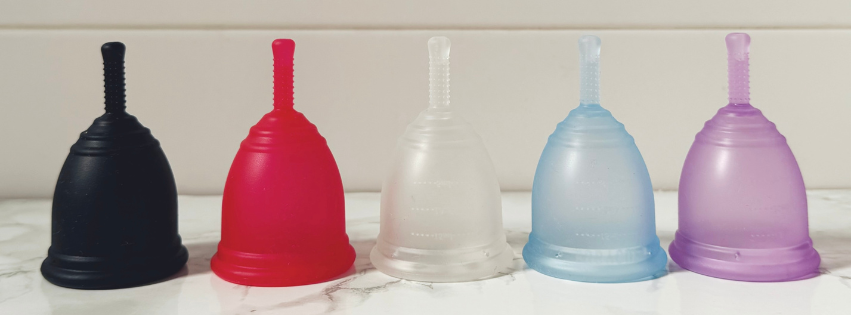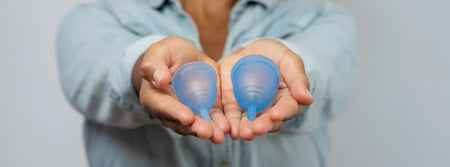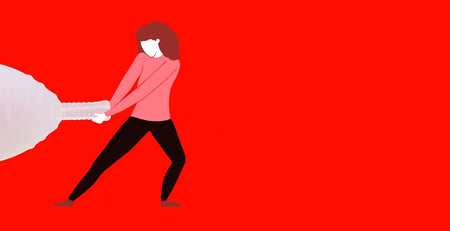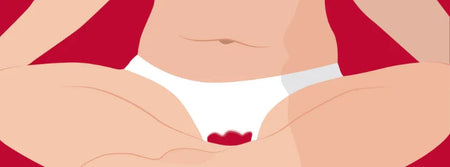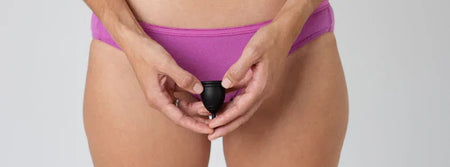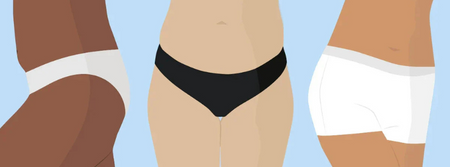This article is written by medical professional Dr. Dorothee Struck, whom you can read more about at the end of the article.
Many people wonder whether it is safe to continue using a menstrual cup after having a vaginal infection, and if so how to do so safely. We asked gynaecologist Dr. Dorothee Struck to explain.
Can I Use My Menstrual Cup After Vaginal Infection?
Nothing speaks against using the menstrual cup as long as, like the Ruby Cup, it is made of medical-grade silicone, because they are easy to clean and highly resistant to bacteria as they have no pores in which germs can hide. Your menstrual cup doesn't have to be completely sterile either, because the vagina is a self-cleaning system, with lactic acid flora that defend against pathogens causing vaginal infections if we don't annoy them and create an imbalance of vaginal pH.
Friends and foes from the bacterial world
Before we get to how to clean your menstrual cup after an infection, it is important for me to write a few words about the normal colonization of the vagina. The main germs, i.e. the most important group of bacteria in the vagina, are various lactic acid bacteria.
These lactobacilli not only produce lactic acid, but many of them also produce bactericides, which are substances that actively keep other bacteria and fungi away. In doing so, they not only protect us, but also themselves from "feed competition".
The lactobacilli of the vagina are our local recycling centre, which break down dying vaginal wall cells and feed on them and, above all, on the glycogen contained in the cells. They are reluctant to share this food source and therefore defend themselves against many other bacteria and fungi. However, if we annoy the lactobacilli, then they cannot fulfill their function.
How can I prevent a yeast infection?
The lactic acid flora can be damaged by improper menstrual hygiene and using period products that don’t respect your body’s natural balance. Tampons not only absorb blood, but also vaginal fluid and, like pads, can contain harmful substances. Our good lactobacilli need water and moisture to live and multiply. The menstrual cup catches the blood but, unlike the tampon, does not dry the vagina out. Therefore, switching to a menstrual cup is the first step towards a stable, healthy vaginal flora.
Furthermore, preservatives in shower gels, shaving foams and other cosmetics can reduce the good protective bacteria in your vagina. Therefore, if you are susceptible to infection, the genital area should only be washed with water. Yes, you read that correctly, because intimate wash lotions, that are adjusted to the pH value, also contain preservatives that kill bacteria (due to cosmetics regulations).
Since all of our genital secretions (menstrual blood, weekly flow and cervical mucus, etc), are water-soluble, we absolutely do not need soaps, shower gels or special washing lotions in the genital area. Vaginal douches also disrupt the intact flora more than they are helpful.
The pill is also not good for the lactic acid bacteria.
Contraception also plays a role in building up the protective flora: pills that dry out the skin and are prescribed against acne naturally also dry out the skin of the external genital area and the vaginal walls. In addition, many pills that are prescribed today have very low levels of (almost always artificial) estrogens. This has reduced some of the side effects that the high-dose pills had in the 1960s and 1970s. But the lower the amount of estrogen per pill, the less glycogen the vaginal wall cells contain, so the lactobacilli find less food and are difficult to maintain.
In the worst case, there are hardly any lactic acid bacteria left, which opens the door to infections of the vagina and bladder, and the side effects are postponed. Other contraceptives can also affect the flora; spermicides such as nonoxinol-9, for example, not only kill the sperm cells, but also lactobacilli. Hormone-free contraception and thus a natural cycle are best for our bacterial protection system, including NFP, diaphragm with sperm-inhibiting gel and copper spirals, the chain and the ball.
As a gynecologist, I very often experience people who are terrified that bacteria could get into the vagina on their menstrual cup or diaphragm. Rather, we should ensure that our lactobacilli protection system remains intact.
How do I properly clean a menstrual cup after an infection?
Has there been an infection i.e. If you notice any discharge that itchy, burned or smell unpleasant, the cup should be disinfected as follows. Disinfection means making germ-free and can be done using high temperatures, vapor pressure, radiation or chemical agents.
The most important thing is washing combined with mechanical cleaning, if possible when the cup comes out of our body while still damp. Why this? Protein components from blood and mucus are a breeding ground for bacteria. If these dry on the cup, they are difficult to remove later. This means that before each disinfection (3-minute boiling of the Ruby Cup), residues must be removed so that no bacteria can hide there or bacteria later find a breeding ground there. In the household we can work with heat or appropriate disinfectants such as Milton tablets. If, however, protein residues stick to the cup, they can be a breeding ground for a new colonization with environmental germs, even after thorough disinfection; It is therefore important, especially after an infection: first scrub, then disinfect!
After an infection, the menstrual cup should be cleaned with liquid soap and, if necessary, an old toothbrush after menstruation. Then rinse off well so that no soap residue can cause irritation in the vagina. Then the menstrual cup is boiled for 3-5 minutes. Boiling can be done in a saucepan, or using a Ruby Sterilizer in the oven or microwave.
If using a metal cooking pot, the period cup should not come to the bottom, because it often gets very hot and the cup can deform. Another possibility are disinfectant tablets or solutions that are dissolved or diluted in water and the cup is then soaked. Even afterwards, the cup should be rinsed well so that residues of the disinfectant do not irritate the vagina.
Finally, dry it well and store it in an airy container like the cloth bag that comes with your Ruby Cup if possible, because moisture is, as already mentioned, a breeding ground for bacteria, even for unfriendly ones. Therefore, a menstrual cup should never be kept wet in a closed container.
This type of cleaning is usually sufficient. On the one hand, bacteria do not adhere well to dry medical silicone; on the other hand, a penis is not sterile either, and our vaginal protective flora can handle it.
There is no need at all to buy a new menstrual cup because of an infection after cleaning in the manner suggested above. That's the nice thing about the menstrual cups that they can be used again and again for years and that they don't produce any waste.
Written by Dr. Dorothee Struck
Dr. Dorothee Struck is a specialist in gynecology, naturopathic medicine, author and freelance lecturer. For her, women's health means supporting women to understand their bodies and what is happening in them. Since 2005, Dr. Dorothee Struck established her own private practice in Kiel, previously she was a senior physician in Winsen an der Luhe from 2002-2004.


